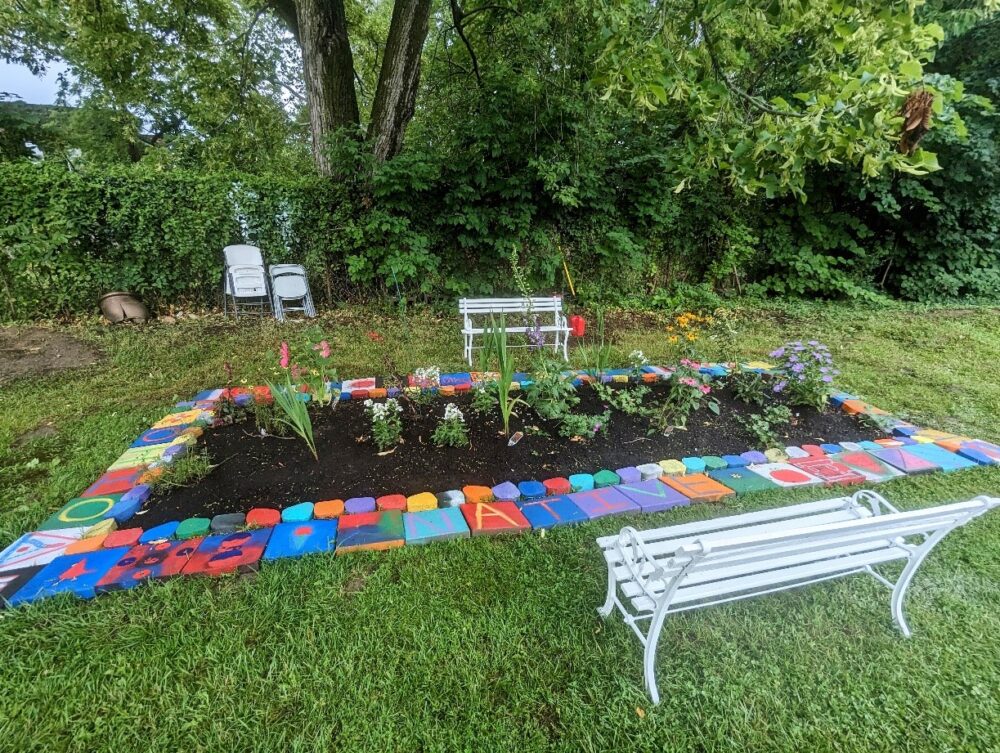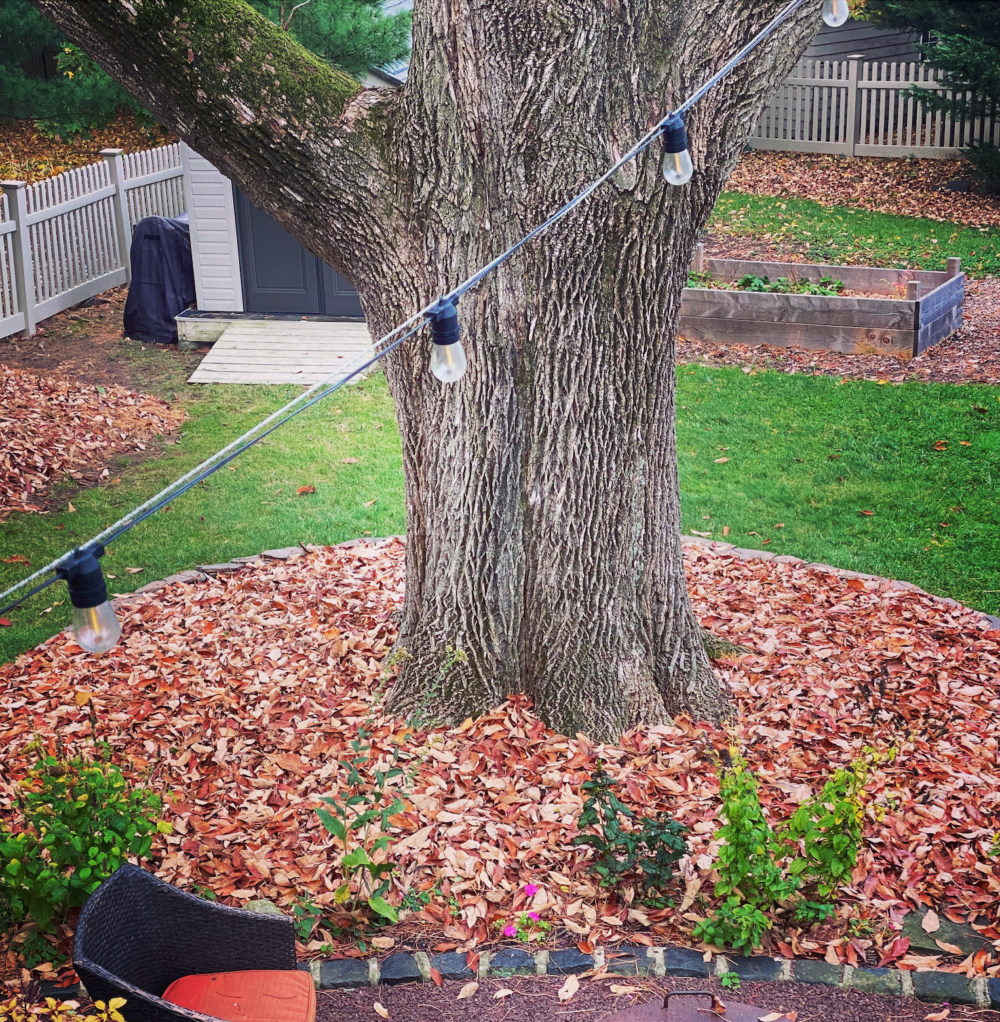We have much more to do and your continued support is needed now more than ever.
What to do With Fallen Leaves

Updated October 2022
You shouldn’t feel obligated to get rid of every last fallen leaf in your yard this fall. Leave the leaves — they offer a lot of benefits for wildlife and your garden. Read on to find out why and for tips on how to minimize the time you spend raking this autumn and maximize the benefit to wildlife and the greater environment that fallen leaves offer.
Leave the Leaves for Wildlife
A leaf layer several inches deep is a natural thing in any area where trees and shrubs naturally grow, whether that’s the local woodlands or your own yard or garden. The leaf layer is its own ecosystem! Many wildlife species use the leaf layer as their primary habitat including salamanders, chipmunks, wood frogs, box turtles, toads, shrews, earthworms, millipedes, and thousands of insects species.
Many butterfly and moth species overwinter in the leaf layer, including luna moths, great spangled fritillaries, woolly bear caterpillars (which become Isabella tiger moths), and red-banded hairstreaks. Some species overwinter as eggs, some as pupae, and some as adults. In the case of moths, 94 percent of species rely on the leaf layer to complete their lifecycle. If you rake up and throw away all of your leaves this fall, you’ll be getting rid of important habitat for these beautiful and beneficial insects, many of which are pollinators.
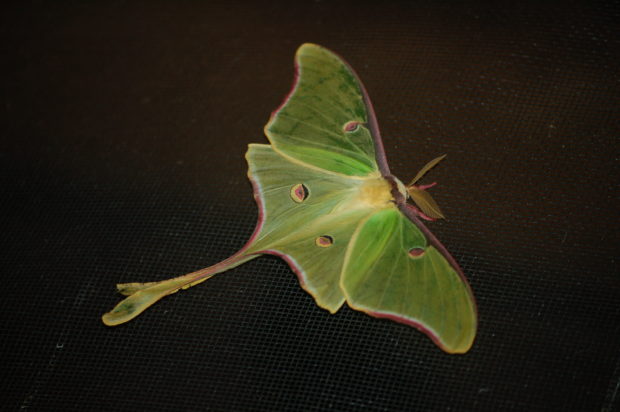
Many bird species forage in the leaf layer searching for insects and other invertebrates to eat, including wood thrushes, towhees, robins, sparrows, common yellowthroats, bobwhites, and wild turkeys. The vast majority of our backyard birds — some 96 percent — rely on those butterfly and moth caterpillars as the primary food source for their babies during the nesting season. If you remove all of your fallen leaves, there will be fewer of these insects in and around your yard and fewer birds too. Some birds, such as ovenbirds, also nest in the leaf layer on the ground rather than in the branches.
Even some bat species overwinter in the leaf layer and can’t survive severe cold temperatures without it.
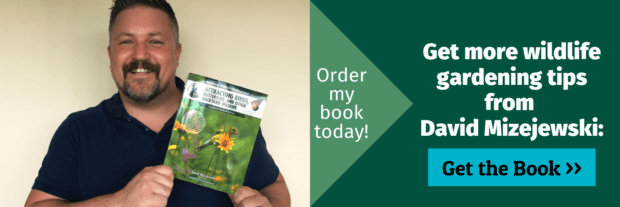
Leaves are Free Mulch and Fertilizer
From a gardening perspective, fallen leaves offer a double benefit. Leaves form a natural mulch that helps suppress weeds and at the same time fertilize the soil as they break down. Why spend money on mulch and fertilizer when you have a free source in the form of fallen leaves? Simply let leaves lie where they fall or move them into your garden beds to protect your plants’ roots, suppress weeds, preserve soil moisture and eventually break down and return nutrients to the soil.
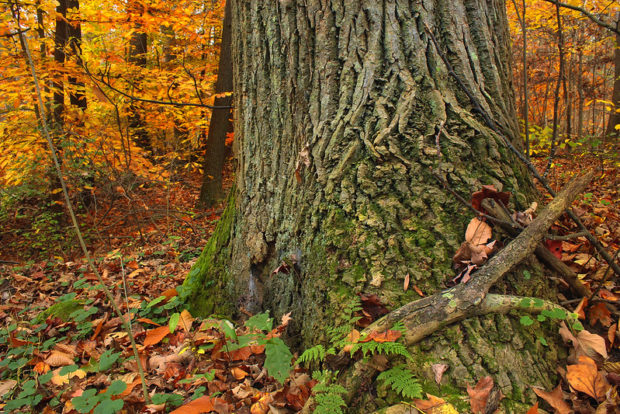
If you’re worried about leaves blowing out of your garden beds, you can shred them into a finer textured mulch by putting them in a big trash can and using hedge clippers to chop them down into smaller pieces less likely to blow away.
If you decide to get rid of your leaves, don’t throw them in the trash. They end up in the landfill where they break down and produce methane, a significant greenhouse gas contributing to climate change. In fact, each year some 30 million tons–13 percent of the solid waste we send to the landfills–is yard waste, mostly fallen leaves and grass clippings. Landfills are the third biggest source of methane pollution in the U.S. To minimize this negative impact, compost leaves at home or drop them off at a municipal recycling center so they can be turned into compost that you and other members of your community can use in the spring. Some communities even offer curbside pick up of leaves specifically for municipal composting operations.
Composting or shredding will likely eliminate many of the insects living in the leaves as you shred them, but at least you’ll be recycling the leaves back into your soil.
Avoid Lawns, Mowers and Blowers
Yes, a thick layer of fallen leaves will smother lawn. The best way to solve this problem is to reduce the size of your lawn, which is an ecological dead-zone that supports almost no living things and requires large amounts of polluting pesticides and fertilizers and wasteful amounts of water to stay green. Even better, completely convert your lawn into beautiful natural plantings.
If you must have a tidy look in your yard or maintain a lawn to comply with Home Owners Association or municipal rules, you can move leaves off the lawn but still use them as mulch in your planting beds. You can also use a mulching mower to chop leaves on your lawn into tiny bits that won’t smother the lawn and also return nutrients to the soil.
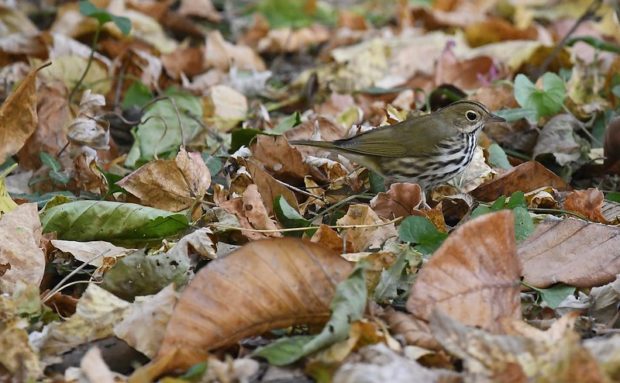
Avoid gasoline-powered lawnmowers and leaf blowers if at all possible. They are enormous producers of air pollution, impacting human health and contributing to climate change. They also produce tremendous amounts of noise pollution. Electric mowers and blowers produce less pollution than gasoline-powered ones and are better options, though not pollution-free. Use a manual push mower to cut your lawn, which doesn’t create air or noise pollution like gasoline-powered mowers do. When it comes to moving leaves, just use a rake. You’ll be able to hear the chirping of birds and other natural sounds while you’re working, plus you’ll get some good exercise! The best option of all is to create a landscape where you don’t have to mow, blow or rake at all but can allow the natural cycle of leaf-fall to happen.
Remember, the less time you have to spend doing the back-breaking work of blowing, mowing, or raking your leaves, the more time you have to enjoy the gorgeous fall weather outside and the wildlife visiting your garden!
Fall is a fantastic time to make your yard more wildlife-friendly by leaving your fallen leaves on your property and by planting native plants. Our Native Plant Collections are curated to support wild native bee species, butterflies and moths, and the birds that feed on them right in your own yard or garden.
Learn More!
Find out more about the benefits of fallen leaves in our on Leave the Leaves content series:



















